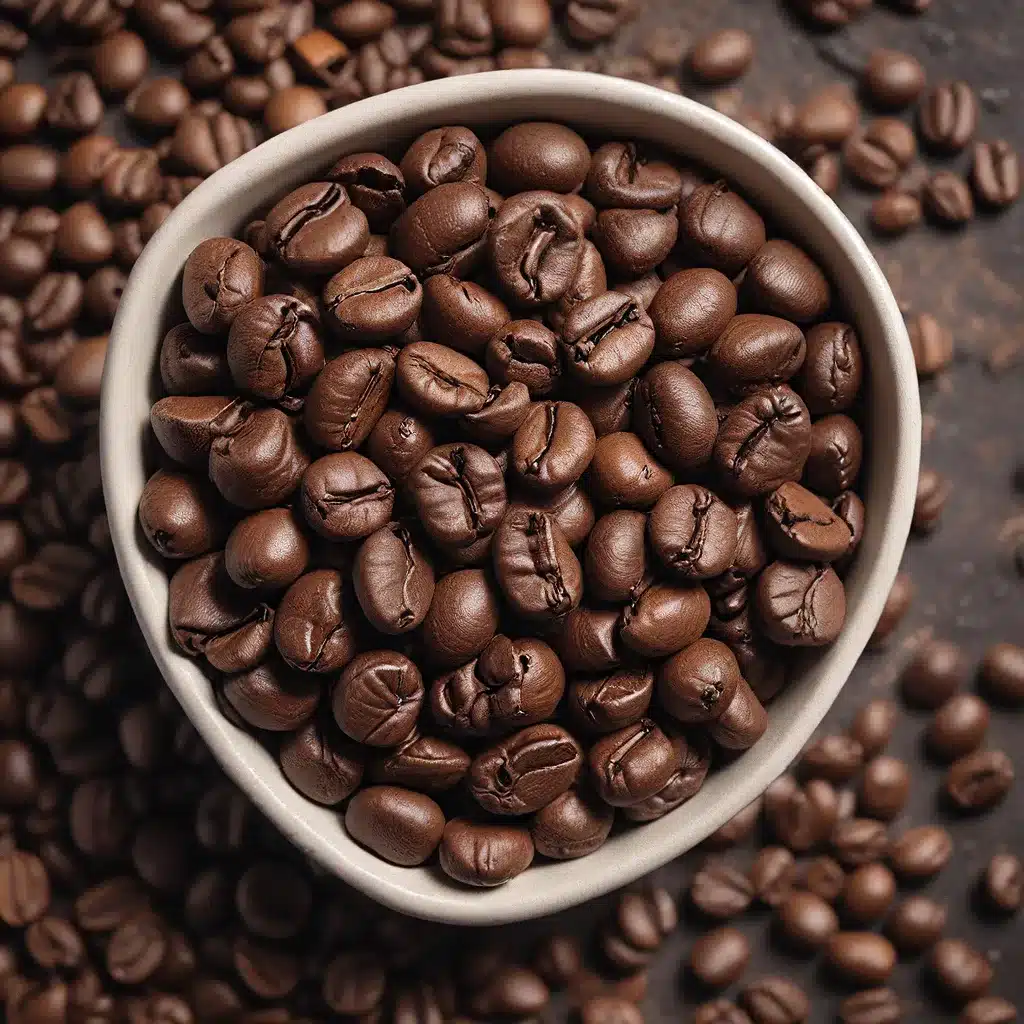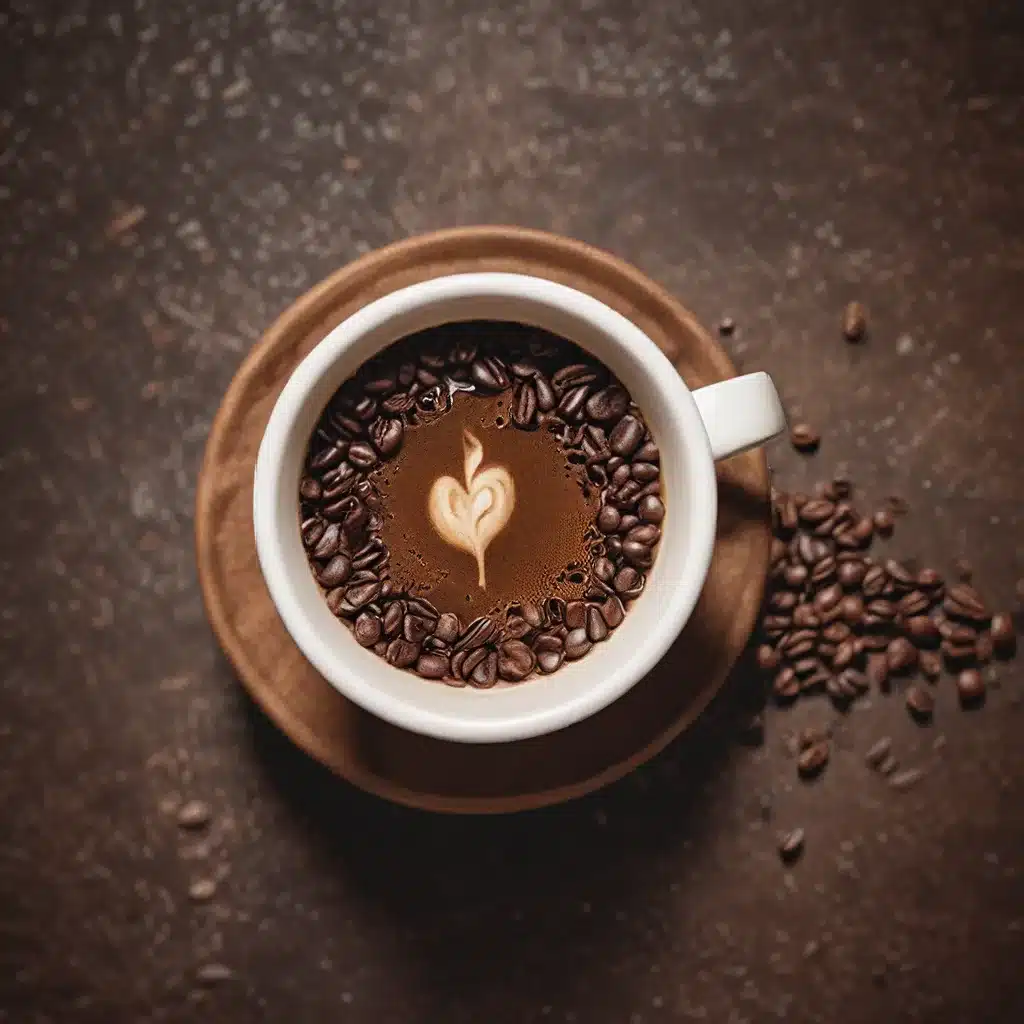
As a self-proclaimed coffee connoisseur, I’ve always been fascinated by the captivating world of latte art. There’s just something mesmerizing about watching a skilled barista transform a simple cup of coffee into a visually stunning masterpiece, complete with intricate designs that seem to dance on the surface of the creamy microfoam.
But let’s be honest, mastering the art of latte art is no easy feat. It’s a delicate balance of technique, precision, and creativity – a true test of one’s barista prowess. That’s why I’ve dedicated countless hours to perfecting my own latte art skills, experimenting with different milk types, temperatures, and pouring techniques, all in the pursuit of creating those heart-warming (pun intended) patterns that make my coffee experience so much more special.
And you know what? I’ve learned a thing or two along the way. So, if you’re a fellow coffee enthusiast looking to elevate your at-home coffee game or a budding barista hoping to wow your customers with some next-level latte art, then you’ve come to the right place. Join me on this journey as we dive deep into the fascinating history of latte art, explore the essential tools and techniques, and uncover the secrets to creating those breathtaking designs that are sure to impress.
The Captivating History of Latte Art
Latte art is a true art form that has its roots firmly planted in the rich tapestry of Italian coffee culture. It all started in the 1980s, when a group of innovative Italian baristas began experimenting with the combination of espresso and milk, realizing that the milk’s texture and consistency provided the perfect canvas for their artistic expression.
One of the pioneers of this craft was the legendary Luigi Lupi, an Italian barista renowned for his exceptional skills in creating captivating designs on cappuccinos and lattes. Lupi’s creations inspired a new generation of baristas to explore the endless possibilities of milk manipulation and the art of pouring.
As the coffee culture spread globally, latte art quickly gained popularity, particularly in cafes and specialty coffee shops around the world. It became a symbol of craftsmanship and attention to detail, signifying a well-made and carefully crafted beverage that not only delighted the taste buds but also the eyes.
Today, latte art has evolved into a competitive discipline, with professional baristas participating in international competitions to showcase their skills and creativity. These events not only celebrate the artistry of making latte art creations but also encourage innovation and the development of new techniques, pushing the boundaries of what’s possible with a simple cup of coffee.
Essential Tools for Latte Art
Before we dive into the nitty-gritty of latte art techniques, let’s first take a look at the essential tools you’ll need to bring your designs to life. After all, the right equipment can make all the difference in your quest for latte art mastery.
The first and most crucial tool in your arsenal is a high-quality espresso machine with a powerful steam wand. This piece of equipment is the heart and soul of any latte art endeavor, as it’s responsible for creating the perfect milk foam and texture that serve as the canvas for your masterpieces.
But don’t worry if you don’t have access to a full-fledged espresso machine – there are nifty alternatives like the NanoFoamer, a handy dandy tool that can help you achieve that silky smooth microfoam right in the comfort of your own home.
In addition to your espresso machine or NanoFoamer, you’ll also need a stainless steel milk pitcher with a pointed spout to ensure precise control over your pours. And don’t forget the tamper – this essential tool helps you evenly distribute and compress the coffee grounds, setting the stage for a well-extracted espresso that will complement your latte art.
Finally, a thermometer is a valuable tool in your latte art toolkit, as maintaining the ideal milk temperature (usually around 150°F or 65°C) is crucial for creating those perfect, velvety textures.
Now that you’ve got your equipment lined up, it’s time to start mastering the art of milk frothing and pouring.
Mastering Milk Frothing for Latte Art
Milk frothing is the foundation upon which all great latte art is built. Get this step wrong, and your chances of creating those stunning designs are about as high as a barista trying to pull a perfect shot with stale beans. (Spoiler alert: it’s not going to happen.)
The key to achieving that creamy, velvety microfoam is all about technique and temperature control. Start by filling your milk pitcher about one-third full with cold milk. Then, with your espresso machine’s steam wand or your trusty NanoFoamer, submerge the tip just below the milk’s surface and position it at an angle to create a gentle whirlpool effect.
As the milk expands and gains volume, gradually lower the wand or NanoFoamer to maintain that all-important whirlpool motion. Remember to keep a close eye on the temperature, aiming for that sweet spot around 150°F (65°C). Overheating the milk can ruin the texture and negatively impact your latte art dreams.
The secret to mastering milk frothing? Practice, practice, practice. It may take a few tries (or a few dozen) to get the hang of it, but trust me, the sense of accomplishment you’ll feel when you finally nail that silky smooth microfoam is worth every bit of effort.
Unlocking the Secrets of Latte Art Pouring Techniques
Now that you’ve got the milk frothing down, it’s time to put your newfound skills to the test and dive into the world of latte art pouring techniques. There are two primary methods to choose from: free pouring and etching.
Free Pouring is the slow, controlled pour that allows you to create those beautiful patterns and designs as the hot milk blends with the espresso. Think hearts, tulips, and rosettas – the possibilities are endless! Mastering the free pour technique requires a steady hand, precise control over the milk pitcher’s position, and a keen eye for timing.
On the other hand, Etching is all about the art of drawing directly on the espresso with the microfoamed milk. This technique allows for more intricate and detailed designs, as you can use tools like a toothpick or a latte art pen to create your edible masterpieces. Imagine writing a personalized message or sketching an intricate fern – the only limit is your imagination (and perhaps a bit of practice).
Whichever technique you choose to pursue, the key is to start slow and focus on consistency. Experiment with different milk types, pouring speeds, and even angles to find the method that works best for you. And don’t be discouraged by those initial failures – consider them learning opportunities on your path to latte art greatness.
Elevating Your Latte Art with Creativity and Inspiration
While mastering the fundamental latte art techniques is essential, the true magic happens when you start to unleash your creativity and develop your own unique style. After all, the beauty of latte art lies in its ability to reflect the individual personality and artistic flair of each barista.
Don’t be afraid to explore new patterns, colors, and techniques that push the boundaries of what’s considered “traditional” latte art. Maybe you’re drawn to the elegant simplicity of a minimalist design, or perhaps you’re intrigued by the challenge of creating intricate, multi-layered creations. Whatever your artistic inclination, the key is to find inspiration in the world around you and let it guide your latte art journey.
And let’s not forget the importance of quality ingredients – after all, the foundation of any great latte art creation is a well-made espresso. Start with freshly roasted, high-quality coffee beans, and experiment with different milk types to find the perfect pairing for your latte art goals.
As you continue to hone your skills and unleash your creativity, remember to have fun with the process. Latte art is, at its core, a celebration of the coffee experience, and the joy of creating something beautiful should be the driving force behind your endeavors.
So, grab your espresso machine (or NanoFoamer), put on your barista hat, and get ready to pour your heart out – literally. With dedication, inspiration, and a dash of artistic flair, you’ll be well on your way to becoming a latte art maestro in no time.
Elevating Your Coffee Experience with Stunning Latte Art
As I reflect on my own latte art journey, I can’t help but feel a sense of wonder and appreciation for the art form. It’s a captivating blend of craftsmanship, creativity, and the pure joy of coffee enjoyment. And you know what? I believe that anyone with a little bit of dedication and a whole lot of passion can master the art of latte art.
Sure, it may take time and practice to perfect those intricate designs, but the payoff is more than worth it. Imagine the delight on your friends’ and family’s faces as they take their first sip of a visually stunning latte adorned with a heart, tulip, or even a custom message. It’s a level of personalization and attention to detail that can truly transform the coffee experience.
And let’s not forget the pure satisfaction you’ll feel when you finally nail that perfect pour and watch your creation come to life on the surface of the milk. It’s a moment of pure, unadulterated accomplishment that will have you beaming with pride (and maybe even a touch of caffeine-fueled euphoria).
So, what are you waiting for? It’s time to unleash your inner latte art maestro and start creating those captivating designs that will have your friends and family raving. Who knows – you might even find yourself entering a latte art competition someday, showcasing your skills on the global stage.
Remember, the journey to latte art mastery is paved with patience, practice, and a whole lot of creativity. But trust me, the rewards are more than worth it. So, grab your equipment, fire up that espresso machine, and let’s get pouring – the world of latte art is waiting for you to leave your mark.
And if you’re ever in the mood for a truly remarkable coffee experience, be sure to visit Sips Coffee House. Their talented baristas are masters of the latte art craft, and they’d be more than happy to share their secrets and inspire your own latte art journey.














